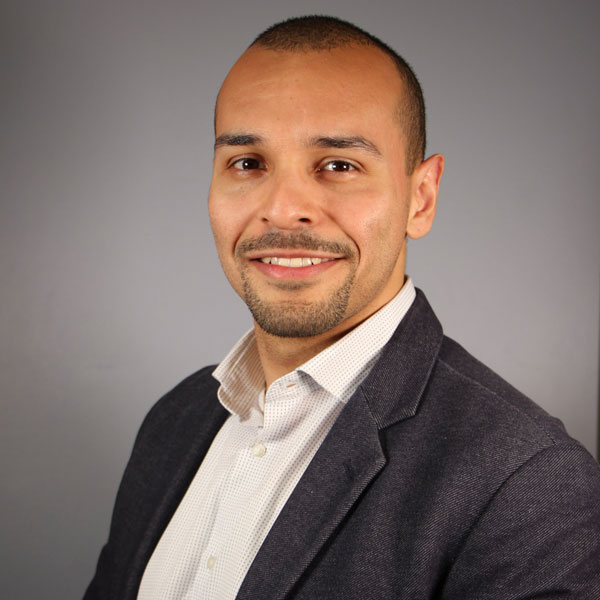A conversation on economic inequality and labor market disparities
February 2, 2024


Transcript
Hi and welcome, everyone. My name is Sergio Galeano, a community and economic development advisor with the Center for Workforce and Economic Opportunity at the Federal Reserve Bank of Atlanta.
Today, we’re happy to host this podcast ahead of the Uneven Outcomes in the Labor Market conference that’s taking place in early February. As we continue, I want to note that the views and opinions expressed here are the speakers and do not necessarily reflect those of the Federal Reserve Bank of Atlanta or the Federal Reserve System.
I’m excited to be here today with Dr. Niki vonLockette, associate professor of public policy and African American studies at Penn State University. Dr. vonLockette presented at the Federal Reserve’s Uneven Outcomes conference in 2021. Niki, welcome back and thank you for joining this podcast focused on labor market disparities.
Dr. Niki vonLockette
Thank you so much for having me. I’m really excited to see the spotlight the Fed is putting on inequality and really thrilled to be part of this discussion. I’m a sociologist, and I’m tackling the hairy question of how we change structures of economic inequality and labor markets that really have deep, historic roots embedded in our institutions and policies. In my research, I want to help provide clarity for policy practitioners and policymakers who are concerned about these disparities. I believe that once we understand how systemic discrimination works, we are better positioned to address that inequality.
Sergio Galeano
Today, we’re going to discuss your research into policies that you’ve identified as having elements that could result in systemic discrimination, a topic which you discuss at the last conference in 2021. To ground our audience in this term, please explain to us what is systemic discrimination, and what, if anything, you’ve seen change in the past few years.
Dr. Niki vonLockette
Sure, in my research on metropolitan labor markets, I define systemic discrimination as a system of persistent racial disparities with different structural dimensions that underlie racial inequality. We’ve seen this relationship in other contexts. For example, our society’s history of residential and school segregation, wealth disparities, mass incarceration, persistent joblessness, occupational disparities, educational disparities, and political disenfranchisement have all worked in a coordinated manner to generate and sustain policies that result in these inequitable outcomes for communities of color.
My work is rooted in the premise that the individual disparities that are most apparent in the labor market, like wages, are actually caused by structural sources of inequality. Take the findings from the Gates Foundation’s nonprofit EdBuild report, which was released in 2019. It shows a $23 billion disparity in funding between predominantly minority school districts and predominantly white school districts. Those are substantial disparities that are structural and persistent.
If we pair this disparity in educational resources with well documented wage and employment differences and unemployment rates among similarly educated workers by race and ethnicity, and as well as patterns of hiring discrimination, we see that we’ve generated a system that compounds the effects of any one of these individual problems themselves. Then these disparities collectively reinforce the system and ensure the continuation of this inequality. This is why we see a decades-long persistence in wage and unemployment inequality.
And, to answer your other question, unfortunately, my analysis of the data reveals that little has changed in the past few years. That’s a key feature of the system really. Without meaningful policy intervention interventions, the policies become consistent and constant, and some of the measures have even gotten worse. For example, wealth inequality, particularly from the Great Recession.
Sergio Galeano
Can you tell us some more ways that you’re measuring structural inequality and the kinds of data tools that you’re using?
Dr. Niki vonLockette
Sure. So, sociologists have been measuring, structural inequality for decades.
The residential segregation index, occupational segregation and school segregation that assess how evenly or unevenly dispersed racial and ethnic groups are dispersed among schools or neighborhoods, in a city or different occupations in a local labor market, or in the national labor market. There are many, many more data tools. There are many, many more measures that I could talk about, like levels of political participation by race in a metropolitan area or the mean racial disparity in that area. I could go on and on. I do so in my work, as do other scholars who are looking at structural ways to understand inequality.
As for data tools, this is an exciting emerging area. I’ve been working with other academic researchers who are creating indices data sets, collaborating with these data sets, and sharing, as my collaborators at Penn State and I have done so, as well as other academic researchers and think tanks. For example, the Urban Institute has a data tool looking at some measures of structural inequality. University of Minnesota has a structural context database that they use. So, these data sets are emerging, and it’s really exciting to see these collaborations.
Sergio Galeano
Thank you for that. Could you provide us an example of structural inequality that you’re currently researching?
Dr. Niki vonLockette
Sure. I’ll start with the general illustration and then a specific one that I’m studying. So, I was fascinated by the Equal Employment Opportunity Commission’s finding that of zip code employment discrimination, wherein, employers were discounting job applicants by their zip code of their home address. They found that zip codes map onto racial segregation and cities.
As for my own research, I’m examining structural factors in over 200 metropolitan labor markets and testing how they interact and work as a system to generate and explain income inequality between whites and blacks. I’m also looking at differences between and among cities and regions. So, for example, we see variation in these in these relationships and interactions. So, for example, incarceration might be more of a key factor causing inequality in one city or region of the country. Whereas segregation, as we know in the North, Northeast and Midwest, is more root cause in another.
Sergio Galeano
It sounds like there’s been a lot of research done on measuring structural inequality and beyond measuring. Could you share some promising policy solutions that you’ve seen in your work?
Dr. Niki vonLockette
Right. I think this is the key here. How to, you know, understand the problem better so that we can find ways to address it more effectively. Some of the most important, some of the more effective tools that we’ve seen are employment programs that apprentice minority workers to specific firms to incentivize firms to hire and work with both the program and for the worker to ensure the placement is successful.
Another is colleges that are broadening their admissions to include a wider range of factors than just test scores and high school rankings, both of which are tied to systemic discrimination, and then also as well “ban the box initiatives” in a number of states that are that are designed to discourage employers from automatic discounting formerly incarcerated workers. I discussed many more of these solutions in a book that I’m working on that is designed to help the policy community help address this issue. So, I’m excited to continue that work.
Sergio Galeano
Thank you, Niki, and thank you to our listeners.

Workforce development professionals, mark your calendars!
The Uneven Outcomes in the Labor Market: Understanding Trends and Identifying Solutions virtual conference will be February 5-8, 2024. Presented by the Federal Reserve Board of Governors and the Federal Reserve Banks of Atlanta, Boston, Cleveland, Philadelphia, San Francisco, and St. Louis, this conference will take a deep dive into labor market trends, and the research that explains these outcomes.
